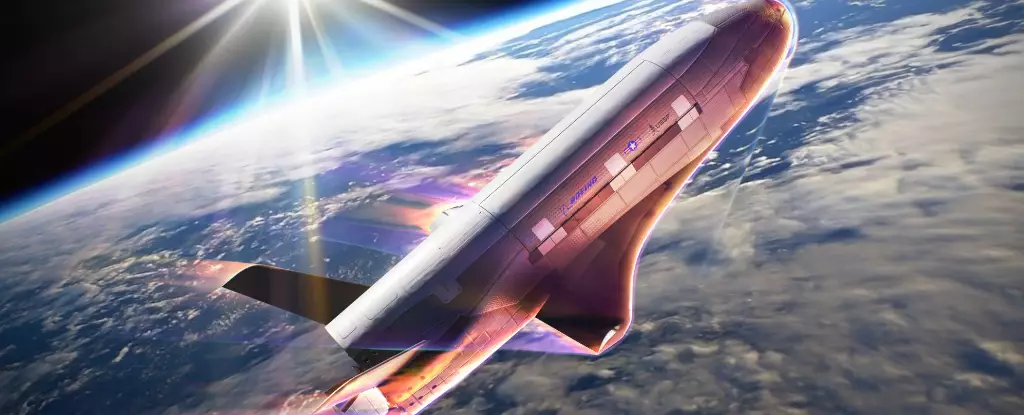Since its debut in 2011, the X-37B Orbital Test Vehicle (OTV) has intrigued and puzzled many in the field of aerospace and military strategy. Built by Boeing and managed under the auspices of the United States Space Force (USSF), this autonomous, reusable spacecraft is engineered to conduct a myriad of operations in Low-Earth Orbit (LEO). Positioned at an altitude of approximately 240 to 800 kilometers (about 150 to 500 miles), the X-37B aims to validate new technologies that are central to the United States’ long-term ambitions in space exploration and security. The recent initiation of its seventh mission in December 2023 highlights its continuing evolution and significance within both scientific and military frameworks.
The X-37B’s OTV-7 mission encompasses a variety of experiments, notably those focused on the effects of space radiation and advancements in Space Domain Awareness (SDA) technologies. These pursuits underscore a shift towards practical applications in real-time space operations. Notably, during this mission, the X-37B will execute a ground-breaking series of aerobraking maneuvers, manipulating its orbit through interaction with Earth’s upper atmosphere. This innovative technique allows it to decelerate and lower its altitude without expending valuable fuel, setting a precedent for future missions. This is the first instance where the X-37B has engaged in such maneuvers, representing a leap forward in the vehicle’s operational capabilities.
Aerobraking, a technique historically utilized by various space missions including Mars orbiters, provides significant advantages, especially for military applications. By dipping into the atmosphere, the X-37B can alter its trajectory and obfuscate its activities from potential adversaries. Essentially, this tactic creates unpredictability in the vehicle’s path, complicating tracking efforts by hostile entities. Frank Kendall, the Secretary of the Air Force, characterizes the maneuver as indicative of the Space Force’s commitment to innovation in national security endeavors, reinforcing the military’s strategic advantages in space. The unique orbital maneuverability played by the X-37B, as articulated by former USAF Secretary Heather Wilson, reveals its capacity to significantly disrupt enemy tracking capabilities.
Despite the technological advancements and military potential associated with the X-37B, much about its true capabilities remains classified. Observers, including renowned astrophysicist Jonathan McDowell, speculate that the vehicle has operational capabilities that can extend beyond traditional parameters of aerospace technology. Questions linger regarding the full breadth of its missions, with hints suggesting that the X-37B can conduct operations that elude detection entirely. The strategic advantage gained by being able to modify its orbital dynamics raises the stakes in the realm of space warfare, effectively rendering its movements unpredictable and therefore more challenging to counteract.
In addition to military applications, the X-37B’s ongoing missions yield valuable scientific data. The “Seeds-2” experiment exemplifies how the vehicle can contribute to understanding biological responses to space conditions, serving as a critical step in future space agriculture endeavors. This dual utility reinforces the X-37B’s role in contemporary aerospace discourse. Furthermore, the commitment to maintaining environmental standards, such as the planned ejection of service module components to mitigate space debris, reflects an awareness of the responsibility tied to space exploration and military operations alike.
As the X-37B embarks on its OTV-7 mission, it symbolizes not only the cutting-edge advancements in aerospace technology but also the evolving landscape of space as a theater of war. The developments in aerobraking and orbital dynamics promised by this mission could pave the way for additional innovations, positioning the US more favorably in the strategic balance of power in space. Moreover, the implications of these advancements extend into the realm of international relations, where the ability to safeguard national interests in orbit may redefine the traditional paradigms of security.
The continued evolution of the X-37B offers insights into not merely technological advancement but also the complexities of modern warfare, national security, and scientific inquiry. As this remarkable spacecraft conducts its orbit-altering maneuvers and exploration missions, it remains a testament to the ambitions of the United States in securing a leadership role in the final frontier. The intersection of military, scientific, and environmental considerations will undeniably shape the future of space engagement, making the X-37B a focal point for discussions on aerospace innovation in the coming years.


Leave a Reply